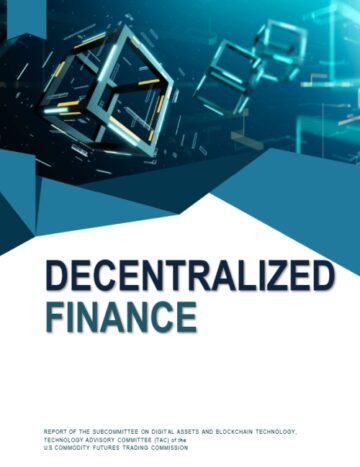March 26, 2024

 Image: Freepik/macrovector
Image: Freepik/macrovectorAnti-money laundering is an issue plaguing more than just the financial industry. Due to our everyday lives becoming more digitized, it’s easier than ever to participate in financial means.
AML regulations exist to regulate and stop fraud, trafficking, tax evasion, and other illegal activities. Unfortunately, implementing regulations is hardly enough to prevent money laundering.
There are multiple challenges that pose obstacles for authorities and various institutions in finding a be-all and end-all solution.
Having said that, the current challenges shouldn’t be an entity that stops all the efforts to minimize money laundering.
Those struggling with the scheme should learn about the challenges and consider potential solutions that we’ll mention in this article.
1. Lack of Sufficient Systems and Processes
Some organizations are simply too small to implement sufficient systems and processes to fend off money laundering threats.
It’s one thing to know about transaction monitoring rules and screening processes and another to actually have sufficient resources to create a functioning system.
Customer data, transactions, and third-party involvement create a complicated ecosystem. And it’s not just the missing tools. Despite advancements in automation, there still have to be competent officers and teams to keep everything in check.
How do we overcome this challenge? Institutions could look for ways to dedicate more resources, even if it means taking from another sector.
Adopting advanced analytical tools and hiring qualified personnel or investing in AML staffing and training programs are worth a shout, too.
2. Insider Threats
Insider threats are another example of a challenge that disrupts an organization’s workflow. Current employees might take advantage of their position to benefit personally.
They avoid detection by using modern technology and collaborating with external criminal networks.
Privilege abuse lets internal threat abusers manipulate data and carry out sophisticated attacks that are hard to detect.
An insider malicious actor might slip up and get themselves caught. However, counting on that is anything but smart.
Taking a proactive approach is a more effective solution. Organizations ought to assess insider risks and implement analytical tools to monitor and identify suspicious behavior.
Significant penalties as a regulation do their job as well. If somebody knows about the potential consequences of laundering money within an institution, they are less likely to engage in such activities.
3. Keeping Up With Changing Regulations
Considering the volume of money laundering worldwide and locally, the regulatory landscape suffers from constant evolution. At least in the sense that institutions struggle to keep up.
Modernizing and implementing more effective solutions by itself is a good thing, but from a company’s point of view, it’s tricky to stay up to date. Changes lead to compliance gaps and ensure confusion, which then means additional costs to an already expensive venture.
Since keeping up with changing regulations is imperative, the best way to go about it is by finding an AML solution that works as a single source for compliance. Regardless of the change, the solution remains up to date, as well as regulatory requirements.
4. Modern Money Laundering Schemes
Criminals are usually ahead because they find new ways to launder money. Regulators have to react and detect these activities to prevent them. And when they do, the criminals probably have another new method or two up their sleeves, ready to move on and stay ahead.
It’s hard to imagine a scenario where regulators are in front and predict what the next money laundering scheme will look like. They dedicate resources to solve current problems instead.
See: Rising Threats: The Global Impact of Push Payment Fraud
Nevertheless, with enough resources, reducing the gap is not out of the question. At the very least, utilizing the latest technology to identify the latest money laundering methods to control them helps.

 The National Crowdfunding & Fintech Association (NCFA Canada) is a financial innovation ecosystem that provides education, market intelligence, industry stewardship, networking and funding opportunities and services to thousands of community members and works closely with industry, government, partners and affiliates to create a vibrant and innovative fintech and funding industry in Canada. Decentralized and distributed, NCFA is engaged with global stakeholders and helps incubate projects and investment in fintech, alternative finance, crowdfunding, peer-to-peer finance, payments, digital assets and tokens, artificial intelligence, blockchain, cryptocurrency, regtech, and insurtech sectors. Join Canada’s Fintech & Funding Community today FREE! Or become a contributing member and get perks. For more information, please visit: www.ncfacanada.org
The National Crowdfunding & Fintech Association (NCFA Canada) is a financial innovation ecosystem that provides education, market intelligence, industry stewardship, networking and funding opportunities and services to thousands of community members and works closely with industry, government, partners and affiliates to create a vibrant and innovative fintech and funding industry in Canada. Decentralized and distributed, NCFA is engaged with global stakeholders and helps incubate projects and investment in fintech, alternative finance, crowdfunding, peer-to-peer finance, payments, digital assets and tokens, artificial intelligence, blockchain, cryptocurrency, regtech, and insurtech sectors. Join Canada’s Fintech & Funding Community today FREE! Or become a contributing member and get perks. For more information, please visit: www.ncfacanada.org
Related Posts
- SEO Powered Content & PR Distribution. Get Amplified Today.
- PlatoData.Network Vertical Generative Ai. Empower Yourself. Access Here.
- PlatoAiStream. Web3 Intelligence. Knowledge Amplified. Access Here.
- PlatoESG. Carbon, CleanTech, Energy, Environment, Solar, Waste Management. Access Here.
- PlatoHealth. Biotech and Clinical Trials Intelligence. Access Here.
- Source: https://ncfacanada.org/4-aml-challenges-for-2024-and-beyond/
- :is
- :not
- :where
- $UP
- 150
- 2018
- 2024
- 26
- 32
- 4
- 62
- a
- About
- about IT
- abuse
- activities
- actor
- actually
- Additional
- advanced
- advancements
- ADvantage
- affiliates
- ahead
- All
- already
- alternative
- alternative finance
- AML
- an
- Analytical
- and
- Another
- anything
- approach
- ARE
- article
- artificial
- artificial intelligence
- AS
- assess
- Assets
- At
- Attacks
- Authorities
- Automation
- avoid
- BE
- be-all
- because
- become
- becoming
- behavior
- benefit
- BEST
- Beyond
- blockchain
- but
- by
- cache
- Canada
- carry
- caught
- challenge
- challenges
- change
- Changes
- changing
- check
- closely
- collaborating
- community
- Company’s
- competent
- compliance
- complicated
- confusion
- Consequences
- Consider
- constant
- control
- Costs
- could
- counting
- create
- Criminal
- Criminals
- Crowdfunding
- cryptocurrency
- Current
- data
- Date
- decentralized
- dedicate
- Despite
- detect
- Detection
- digital
- Digital Assets
- digitized
- disrupts
- distributed
- do
- due
- easier
- ecosystem
- Education
- Effective
- efforts
- employees
- engage
- engaged
- enough
- ensure
- entity
- Ether (ETH)
- evasion
- Even
- EVER
- everyday
- everything
- evolution
- example
- exist
- expensive
- external
- finance
- financial
- financial innovation
- Find
- finding
- fintech
- For
- fraud
- from
- front
- functioning
- funding
- funding opportunities
- gap
- gaps
- get
- Global
- Go
- good
- Government
- Hard
- hardly
- Have
- helps
- High
- Hiring
- However
- http
- HTTPS
- identify
- if
- Illegal
- image
- imagine
- Impact
- imperative
- implement
- implementing
- in
- industry
- information
- Innovation
- innovative
- Insider
- instead
- Institution
- institutions
- Insurtech
- Intelligence
- internal
- investing
- investment
- involvement
- issue
- IT
- itself
- Jan
- Job
- jpg
- just
- Keep
- keeping
- Know
- knows
- Lack
- landscape
- latest
- Laundering
- lead
- LEARN
- least
- less
- Lets
- like
- likely
- Lives
- locally
- Look
- look like
- malicious
- manipulate
- Market
- max-width
- means
- member
- Members
- mention
- method
- methods
- might
- minimize
- missing
- Modern
- money
- Money Laundering
- Monitor
- monitoring
- more
- move
- multiple
- networking
- networks
- New
- next
- obstacles
- of
- off
- officers
- on
- ONE
- opportunities
- or
- organizations
- Other
- our
- out
- Overcome
- participate
- partners
- payment
- payments
- peer to peer
- penalties
- perks
- Personally
- Personnel
- plato
- Plato Data Intelligence
- PlatoData
- please
- Point
- Point of View
- pose
- position
- potential
- predict
- prevent
- Proactive
- probably
- problems
- processes
- Programs
- projects
- provides
- Push
- qualified
- question
- React
- ready
- reducing
- Regardless
- Regtech
- Regulate
- Regulation
- regulations
- Regulators
- regulatory
- regulatory landscape
- remains
- Requirements
- Resources
- rising
- risks
- s
- Said
- scenario
- scheme
- screening
- sector
- Sectors
- sense
- Services
- should
- simply
- single
- small
- smart
- solution
- Solutions
- SOLVE
- sophisticated
- Source
- staffing
- stakeholders
- stay
- Stewardship
- Still
- Stop
- Stops
- Struggle
- Struggling
- such
- Suffers
- sufficient
- suspicious
- system
- Systems
- Take
- taking
- tax
- Tax Evasion
- teams
- Technology
- than
- that
- The
- their
- Them
- themselves
- then
- There.
- These
- they
- thing
- third-party
- this
- thousands
- threat
- threats
- to
- today
- Tokens
- too
- tools
- trafficking
- Training
- transaction
- Transactions
- tricky
- two
- unfortunately
- using
- usually
- Utilizing
- various
- venture
- very
- vibrant
- View
- Visit
- volume
- Way..
- ways
- we
- WELL
- What
- when
- which
- will
- with
- within
- workflow
- works
- worldwide
- worth
- zephyrnet












